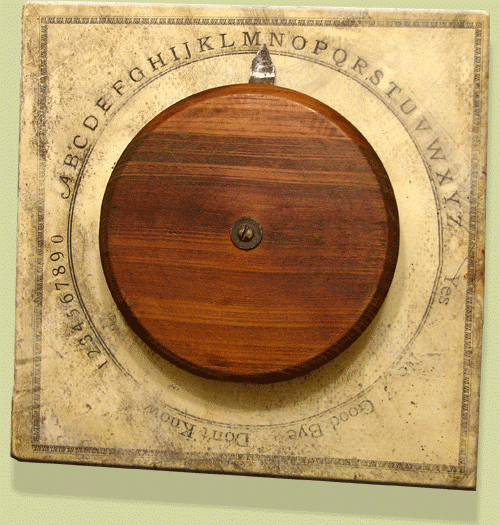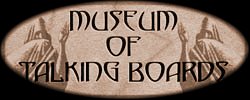
The Psychograph or
Dial Planchette Hudson Tuttle (1836-1910) was a fruit farmer and horse breeder from Berlin Heights, Ohio. A committed spiritualist and author on all topics spiritual, he also operated a small home publishing company with his wife Emma. Together they held public séances and contributed to the many spiritualist newspapers of the time. Although of limited education, Tuttle suitably impressed science greats Ludwig Buchner and Charles Darwin who quoted from his writings. By the mid 1880’s most dial plate talking boards were either of the homemade variety or the foundry forged heavyweights of Isaac Pease. Tuttle thought that there should be a cheap and reliable alternative. Borrowing from the Pease/Hare model, he constructed a dial plate that was inexpensive to make and easy to mail. Around a circle printed on a cardboard base were the alphabet, the numbers zero through nine, and the words “Good Bye” and “Don’t Know.” A circular dial with an indicator rotated in the center of the circle. Ball bearings underneath allowed the dial to swivel smoothly to spell out messages. Advertisements in the spiritualist newspapers insured that the target audience had the opportunity to purchase their very own spiritual telegraph for an economical one dollar and twenty-five cents. Tuttle called his device “The Psychograph or Dial Planchette” and he obligingly kept his customers updated with instructions and improvements as necessary. Unfortunately, the low-priced manufacture of these psychographs meant that few would survive to the modern era. We apologize for our dismal example (above).
 You are visiting the Museum of Talking Boards Copyright © All Rights Reserved. |